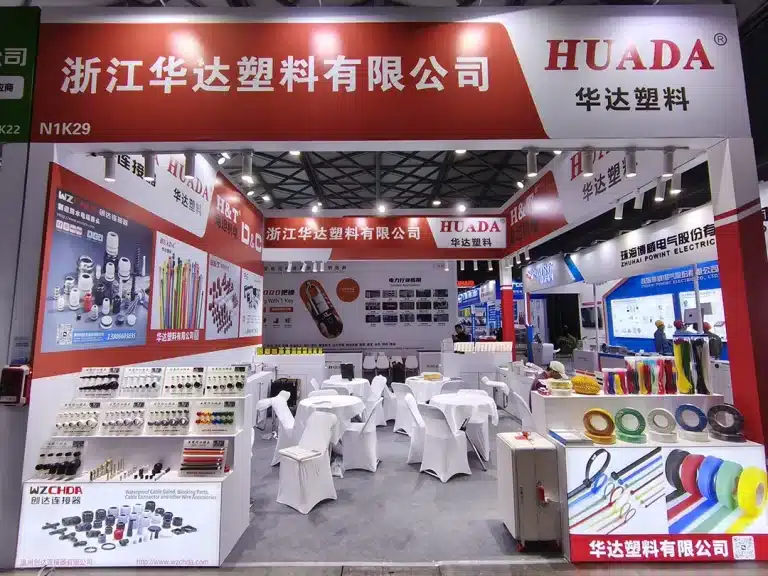During the holidays, my colleague Tom climbed Dongmeng Mountain in Wenzhou, China, and noticed Cable Ties scattered around the mountain. How did nylon cable ties end up here? What are they used for? How are they different from regular zip ties? Let’s take a closer look through the series of photos Tom captured.
Why Were Cable Ties Found on Dongmeng Mountain?
Tom’s photos show Dongmeng Mountain has surveillance cameras, utility poles, and other outdoor power facilities.

Naturally, these installations involve numerous cables that need to be managed. Without proper organization, the tangled cables could disrupt the scenic environment and pose a tripping hazard to hikers, creating potential safety issues.

For instance, long cables are neatly tied to metal poles using nylon cable ties in one photo. This prevents the cables from hanging loosely and ensures they stay in place, even during strong winds or harsh weather, keeping the setup tidy and secure.

In another photo, we noticed that some cable ties were linked together, resulting in what appeared to be a single tie with two heads. This technique is likely used when a single tie isn’t long enough, so two ties are connected to achieve the required length. If you’re curious about how to connect zip ties to make longer, we’ve covered it in a previous article—you can check it out for step-by-step instructions.

Additionally, the photos highlight that the excess ends of the ties have been trimmed cleanly. This prevents sharp edges that could potentially scratch or injure hikers. Such attention to detail not only reflects the professionalism of the maintenance team but also enhances the overall safety of the outdoor facilities.
What’s Special About the Cable Ties on Dongmeng Mountain?
Dongmeng Mountain stands over 470 meters above sea level, where UV radiation is significantly stronger than at ground level. In such high-UV environments, standard nylon cable ties can degrade over time due to prolonged exposure, becoming brittle, or losing their strength. So the ties used on Dongmeng Mountain are typically UV-resistant.
These UV-resistant cable ties are made from weather-resistant Nylon 66 and are infused with UV stabilizers during production. This added protection allows them to effectively resist UV damage, maintaining their physical strength and fastening capability even after prolonged exposure to sunlight. Compared to standard nylon ties, UV-resistant ties have a much longer lifespan, making them the ideal choice for outdoor applications.
Applications of UV-Resistant Cable Ties
In high-altitude areas with intense UV radiation, such as Dongmeng Mountain, standard nylon cable ties may experience faster aging over time, leading to reduced durability and strength. However, UV-resistant cable ties are designed to last longer in such environments, maintaining their performance and reliability for an extended period.
Beyond high-UV environments like Dongmeng Mountain, UV-resistant cable ties are widely used in various outdoor facilities, including communication equipment, power installations, and solar energy systems. Thanks to their specially formulated material, these ties can endure prolonged exposure to sunlight, making them ideal for harsh, UV-intensive conditions.









